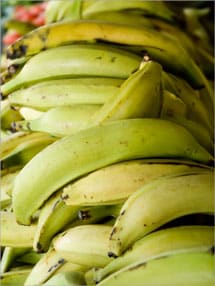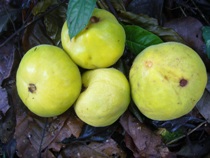Byrsonima crassifolia is a species of flowering plant in theacerola family, Malpighiaceae, that is native to tropicalAmerica. It is valued for its small, sweet, yellow fruit, which are strongly scented.
Byrsonima crassifolia is a slow-growing large shrub or tree to 33 ft (10 m). Sometimes cultivated for its edible fruits, the tree is native and abundant in the wild, sometimes in extensive stands, in open pine forests and grassy savannas, from central Mexico, through Central America, to Peru,Bolivia and Brazil; it also occurs in Trinidad, Barbados,Curaçao, St. Martin, Dominica, Guadeloupe, Puerto Rico,Haiti, the Dominican Republic and throughout Cuba and theIsle of Pines. The nance is limited to tropical and subtropical climates. In Central and South America, the tree ranges from sea-level to an altitude of 6,000 ft (1,800 m). It is highly drought-tolerant.
The fruits, also called nance, are eaten raw or cooked as dessert. In rural Panama, the dessert prepared with the addition of sugar and flour, known as pesada de nance, is quite popular. The fruits are also made into dulce de nance,a candy prepared with the fruit cooked in sugar and water.
The fruits are often used to prepare carbonated beverages, flavor mezcal-based liqueurs, or make an oily, acidic, fermented beverage known as chicha, the standard term applied to assorted beer-like drinks made of fruits or maize. Nance is used to distill a rum-like liquor called crema de nance in Costa Rica. Mexico produces a licor de nanche.
Benefits of Nance
The fruits are often used to prepare carbonated beverages, or an acid, oily, fermented beverage known by the standard term chicha applied to assorted beer-like drinks made of fruits or maize.
Medicinal Uses: The astringent bark infusion is taken to halt diarrhea; also as a febrifuge. It is considered beneficial in pulmonary complaints, cases of leucorrhea, and allegedly tightens the teeth where the gums are diseased. In Belize, it is taken as an antidote for snakebite. In Guyana, the pounded bark is poulticed on wounds. Mexicans apply the pulverized bark on ulcers.


Johnie Enlow
Nice web site, sensible data, great style on your site, added you to my favorites so I can come back back once you post again